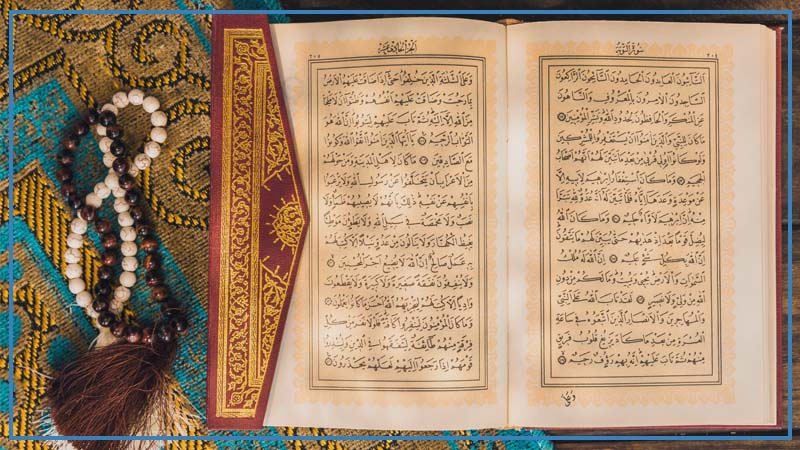
THE HOLY QUR’AN
For example I will now mention to you three sentences and discuss the difference between them please pay close attention.
‘la tashrubil-laban wa ta’kulu as-samak’
‘la tashrubil-laban wa ta’kulis-samak’
‘la tashrubil-laban wa ta’kula as-samak’
What is the difference between these three in meaning? The difference between them is in the ending of the verb ‘ta’kul’ which means to eat. In the first sentence ‘ta’kul’ ends with a dummah. In the second sentence the verb ‘ta’kul ends with a sukuun. In the third sentence however, the last letter of ‘ta’kul’ ends with a fathah. The difference occurs because of the different usages for the ‘waw’. In the first sentence the ‘waw’ is the ‘waw’ signifying a separation. It means, “Do not drink the milk (but no problem) and your eating fish. In the second sentence the ‘waw’ is the ‘waw’ of joining. The sentence means, “do not drink the milk or eat the fish.” In the third sentence the ‘waw’ signifies a unity of action (ma’aiyah). This sentence means, “do not drink the milk and eat the fish at the same time.” All of these changes in meaning took place due to the type of ‘waw’ used. The changes were not only in the actual structure of the harakaat in the words, but also in the meaning of the sentences.
This change is done to stretch the meaning and to also make pronunciation easy upon the toque. An example of changing the meaning through sarf is manipulating the verb ‘nasara’. From ‘nasara’ we may derive the following: Nasara Nas’sara Naasara tanaasara anassara istansara mansar naasir munasar mansoor . All of these words come from one root verb – nasara. As for making it easy upon the tonque I will provide one example.
Let us take the word ‘scale in Arabic. It is called ‘meezaan’. This word comes from the root verb ‘wazana’ which means to weigh. According to a principle of sarf the thing which is used to do this action will sound like ‘mif’aal’. If we were to apply this principle here the item used for the act of weighing would be ‘meewzaan’. Due to the difficulty found in pronouncing that upon the tonque we replace the ‘waw’ with a ‘yaa’ to make it easier. This simplification is broken down into set principles known in sarf. Properly applying principles of sarf can sometimes spell the difference between imaan and kufr. For example Allah said about himself in the Qur’an that he is ‘al-musaawir’-the fashioner. If someone was to pronounce the ‘waw’ with a fathah instead of a kasrah the word would mean ‘al-musaawar’-the fashioned one (the one fashioned by another). Of course the ignorant one making this mistake would be excused but this simply shows you the importance of sarf in the Arabic language.
Course Features
- Memorisation 9999999999
- Tafseer
- Morajaah (revision)
- Reading Qur’an
- Tajweed (ruling of reading)
